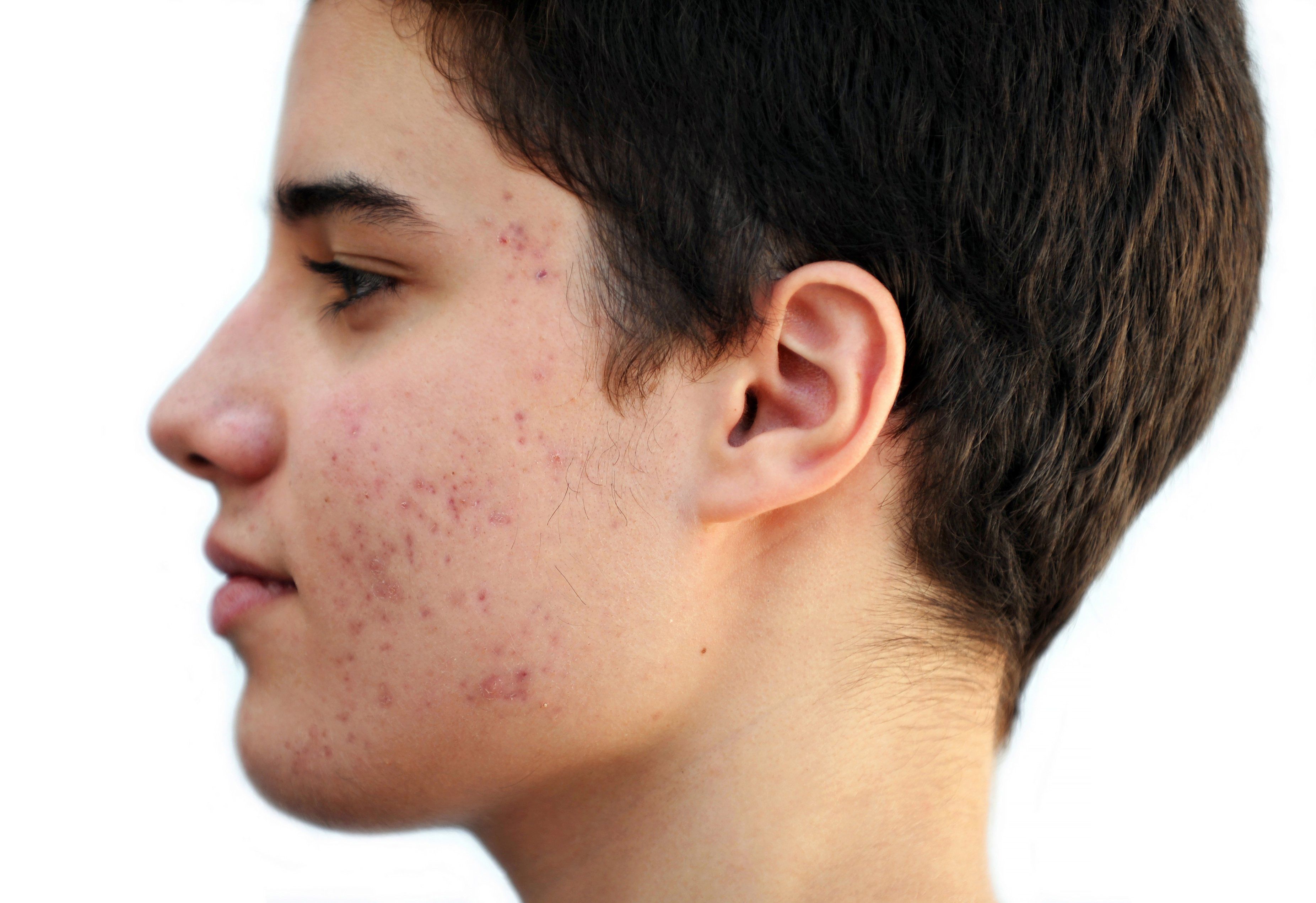- Case-Based Roundtable
- General Dermatology
- Eczema
- Chronic Hand Eczema
- Alopecia
- Aesthetics
- Vitiligo
- COVID-19
- Actinic Keratosis
- Precision Medicine and Biologics
- Rare Disease
- Wound Care
- Rosacea
- Psoriasis
- Psoriatic Arthritis
- Atopic Dermatitis
- Melasma
- NP and PA
- Skin Cancer
- Hidradenitis Suppurativa
- Drug Watch
- Pigmentary Disorders
- Acne
- Pediatric Dermatology
- Practice Management
- Prurigo Nodularis
- Buy-and-Bill
Article
New acne treatments show promise
Author(s):
Are your patients happy with their current acne treatment? These five new therapeutic options could offer better results, according to several studies.
Treatments include topical antiandrogens, insulin-like growth factor-1 inhibitors, dapsone, probiotics and more. (joserpizarro - stock.adobe.com)

Current treatment approaches for acne are becoming inefficient and come with undesirable side effects; however, new options available and in the pipeline are getting better, according to professor Recep Dursun, M.D., of the department of dermatology and venereal diseases at Necmettin Erbakan University, in Konya, Turkey, who was the lead author of a recent paper published July 11, 2019 in Dermatologic Therapy.1
Topical antiandrogens, insulin-like growth factor-1 inhibitors, peroxisome proliferator activated receptor modulators, dapsone and probiotics are among many novel acne therapies that are available or in studies, the authors note.
Among these areas, recent advances include:
1. TOPICAL ANTIANDROGENS
While they’re still in clinical trials for acne treatment, topical antiandrogens could be an option for controlling sebogenesis in patients with especially moderate-to-severe refractory acne, according to the paper.
Researchers studying cortexolone 17É-propionate (clascoterone), a topical androgen antagonist being investigated as an acne treatment in a phase 3 clinical trial, write that studies have shown that clascoterone is a potent and well-tolerated antiandrogen, according to a paper published May 2019 in the Journal of Drugs in Dermatology.2
“The study described herein elucidates for the first time the mechanism of action of clascoterone. Clascoterone was found to bind the androgen receptor (AR) with high affinity in vitro, inhibit AR-regulated transcription in a reporter cell line, and antagonize androgen-regulated lipid and inflammatory cytokine production in a dose-dependent manner in human primary sebocytes,” according to the Journal of Drugs in Dermatology. “In particular, when compared to another AR antagonist, spironolactone, clascoterone was significantly better at inhibiting inflammatory cytokine synthesis from sebocytes.”
2. INSULIN-LIKE GROWTH FACTOR-1 INHIBITORS
A component of green tea, epigallocatchin-3-gallate (EGCG), has been shown to decrease comedone size by reducing the size of sebaceous glands and number of sebocytes, according to the paper in Dermatologic Therapy.
“…patients who have inflammatory and noninflammatory acne lesions, treated with EGCG solution showed a 79% to 89% reduction in lesions in 8 weeks,” according to the authors.
3. PEROXISOME PROLIFERATOR-ACTIVATED RECEPTOR MODULATORS
By downregulating interleukin- (IL-)6 and leukotriene B4, the oral 5-lipxygenase inhibitor zileuton (Zyflo, Cornerstone Therapeutics) reduces inflammatory acne lesions. Zileuton also temporarily inhibits synthesis of sebaceous lipids, according to Dermatologic Therapy.
“New anti-inflammatory compounds, such as the 5-lipoxygenase inhibitor zileuton, may replace systemic antibiotics in the future, especially under the scope of antibiotic resistance prevention,” according to a January 17, 2015 review article in the British Journal of Dermatology.3
4. ORAL AND TOPICAL DAPSONE
Dapsone gel (Aczone, Almirall) is approved by the U.S. Food and Drug Administration to treat acne vulgaris. The sulfone oral dapsone has antibacterial and anti-inflammatory effects, according to Dermatologic Therapy.
Dr. Dursun’s go-treatment for refractory acne is oral isotretinoin. However, based on positive results in the literature on oral dapsone’s use in refractory acne treatment, Dr. Dursun now recommends oral dapsone for some acne vulgaris patients, he says.
“Oral dapsone … can be a good alternative with anti-inflammatory effect for inflammatory acne lesions,” Dr. Dursun says.
5. PROBIOTICS AND PREBIOTICS
Researchers cited several studies that looked at the effects of probiotics on acne in a paper published this year in the Journal of Clinical Medicine.4 Among those, a study by Kang et al., published in 2009 found eight weeks of topical enterococcus faecalis treatment re-sulted in a 50% reduction in inflammatory acne count compared with placebo.
In another study published in 2012, Muizzuddin et al. found a 5% extract of lactobacillus plantarum reduced acne severity. Collectively, these and other findings suggest that the microbiota plays an important role in acne pathogenesis.
“Novel systemic and topical interventions that influence the microbiota (i.e., probiotics, prebiotics), custom tailored to each patient according to their unique microbial ‘fingerprint,’ are worthy of intense research,” according to authors of the paper in the Journal of Clinical Medicine.
Finally, dietary factors in skin disease are hard to ignore, even though there isn’t consensus on the role of diet in acne vulgaris etiopathogenesis, according to Dr. Dursun.
“That’s why probiotics and prebiotics are very popular terms in the advances recently,” he says. Â
Disclosures:
Dr. Durson reports no relevant disclosures.
References:
1. 1 Dursun R, Daye M, Durmaz K. Acne and rosacea: What’s new for treatment?. Dermatol Ther. 2019;:e13020.
2. Rosette C, Agan FJ, Mazzetti A, Moro L, Gerloni M. Cortexolone 17α-propionate (Clascoterone) Is a Novel Androgen Receptor Antagonist that Inhibits Production of Lipids and Inflammatory Cytokines from Sebocytes In Vitro. J Drugs Dermatol. 2019;18(5):412-418.
3. Zouboulis CC, Bettoli V. Management of severe acne. Br J Dermatol. 2015;172 Suppl 1:27-36.
4. Lee YB, Byun EJ, Kim AHS. Potential Role of the Microbiome in Acne: A Comprehensive Review. J Clin Med. 2019;8(7).





